206-701-4929 Pacific Time Free Consultation Click Here
Diet for Dog Liver Shunt, Hepatic Microvascular Dysplasia & Poor Liver Health in Dogs
Rigley (our 9 year old Shih Tzu) stopped eating and was really lethargic for about 1 week. We took him to the vet and the blood work showed elevated liver enzymes. Then we did the Bile Acid Test and we had very abnormal results. They were so abnormal that the lab ran the test again to make sure they didn't make a mistake. Next, the vet recommended having an ultrasound for $1,000 to see if he had a liver shunt. Then we would need surgery to fix the liver shunt.
So, I went home and googled liver shunt and read the reviews on Doglivershunt.com. I didn't know what a liver shunt was! We started the new diet and supplements in late June 2017 and we could see a change almost immediately in Rigley. He started eating and playing ball. On 9/28/17, we did blood work and our liver enzymes were at a 68!! I couldn't believe it!! I totally recommend this program. It is very easy and much better than paying $1000 for an ultrasound and then surgery. Thank you Rick
Staci Van Wieren
Southlake TX
So, I went home and googled liver shunt and read the reviews on Doglivershunt.com. I didn't know what a liver shunt was! We started the new diet and supplements in late June 2017 and we could see a change almost immediately in Rigley. He started eating and playing ball. On 9/28/17, we did blood work and our liver enzymes were at a 68!! I couldn't believe it!! I totally recommend this program. It is very easy and much better than paying $1000 for an ultrasound and then surgery. Thank you Rick
Staci Van Wieren
Southlake TX
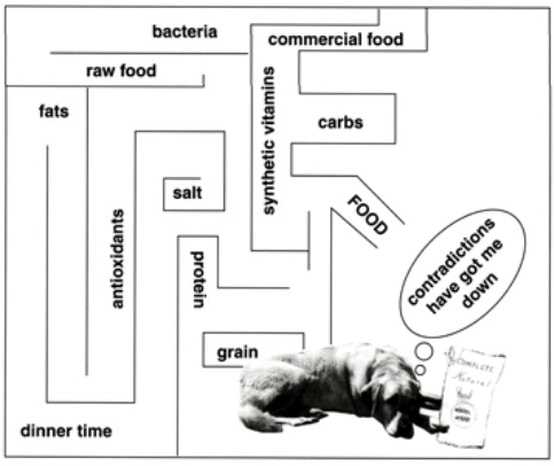
Image: Black and White of an empty harvest by Carol Bennett, B.T., N.A. page 8
"Thanks for your continued advice and support. It gives me clarity through the maze of information and courage to make the right feeding and health choices for my dog."
Why Commercially Prepared Pet Foods Are Damaging To Your Dog

We’re going to begin the subject of diet by talking about why the agri-business commercially prepared dog foods are the major contributors to liver and kidney failure today. We know that this is a strong and bold statement and we need to back it up with scientific data, because for the last several decades we have all been told by the majority of Veterinarians that canned and dry commercially prepared pet foods are an ideal and well balanced diet for our pets. Of course, they get their information from the pet food companies...........
We could go into more details to explain this statement but other individuals and health professionals have already done a terrific job in explaining why such diets are toxic and harmful to dogs’ liver and kidneys. Here’s a link to one of these well researched articles that will give you a detailed summary of this topic. The name of the article is "Dead Dog Food" and the writer is Carrie Clayton.
https://www.facebook.com/BDHBH/posts/542803905763884
There are also several books written by Veterinarians with chapters on the topic of commercially prepared pet foods and why we should never feed these diets to our pets. Here are the names of a few of these books:
• Reigning cats and dogs By Pat McKay
• Give Your Dog a Bone by Dr. Ian Billinghurst
• Natural Health for Dogs and Cats by Dr. Pitcairn
When you read Ms. Clayton’s article and the books we've referred to, you will learn the truth about why some of the first ingredients in these commercially prepared pet foods such as different meats, meat by-products, corn, soy, and oil by-products, are toxic to your dog's body systems.
We could go into more details to explain this statement but other individuals and health professionals have already done a terrific job in explaining why such diets are toxic and harmful to dogs’ liver and kidneys. Here’s a link to one of these well researched articles that will give you a detailed summary of this topic. The name of the article is "Dead Dog Food" and the writer is Carrie Clayton.
https://www.facebook.com/BDHBH/posts/542803905763884
There are also several books written by Veterinarians with chapters on the topic of commercially prepared pet foods and why we should never feed these diets to our pets. Here are the names of a few of these books:
• Reigning cats and dogs By Pat McKay
• Give Your Dog a Bone by Dr. Ian Billinghurst
• Natural Health for Dogs and Cats by Dr. Pitcairn
When you read Ms. Clayton’s article and the books we've referred to, you will learn the truth about why some of the first ingredients in these commercially prepared pet foods such as different meats, meat by-products, corn, soy, and oil by-products, are toxic to your dog's body systems.
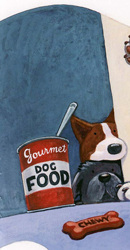
However, I’m sure some of you who will read Ms. Clayton’s article will say: “But we feed our dogs organic commercially prepared pet foods, so how can the ingredients be toxic?” It is true that the organic commercially prepared pet food diets are a step better than the agri-business pet food diets because some of them do use human grade meats, vegetables and oils. Yet even though the organic meat and vegetable ingredients of these diets are good, the rest of the ingredients are still as toxic as what’s in the agri-business commercially prepared pet diets.
The toxic ingredients we are talking about include the assortment of vitamins and minerals added to canned and dry pet diets. Also, grain ingredients in many of these pet diets are quite harmful to your pets. Here’s an example of a well known organic pet food diet. The red or underlined ingredients are toxic to your dogs’ liver and kidneys:
Natural Chicken, Organic Brown Rice, Chicken Meal, Organic Oats, Organic Millet, Organic Barley, Organic Sorghum, Organic Potato, Organic Peas, Organic Canola Oil, Organic Flaxseed, Chicken Fat (Naturally stabilized with Mixed Tocopherols), Dicalcium Phosphate, Organic Carrots, Natural Flavor, Calcium Carbonate, Potassium Phosphate, Sea Salt, Mixed Tocopherols, Organic Spinach, Organic Cranberry, Organic Tomato, Yucca Schidigera, Dried Kelp, Organic Parsley, Organic Rosemary, Choline Chloride, Zinc Proteinate, Ferrous Sulfate, Zinc Sulfate, Vitamin E Supplement, Vitamin B-12 Supplement, Ascorbic Acid (Vitamin C), Taurine, Manganese Sulfate, Niacin, Riboflavin (Vitamin B-2), Copper Proteinate, Copper Sulfate, d-Calcium Pantothenate, Vitamin A Acetate, Inositol, Folic Acid, Pyridoxine Hydrochloride (Vitamin B-6), Thiamin Mononitrate (Vitamin B-1), Vitamin D-2, Biotin, Potassium Iodate, Cobalt Sulfate, Vitamin K1 Supplement, Sodium Selenite.
The toxic ingredients we are talking about include the assortment of vitamins and minerals added to canned and dry pet diets. Also, grain ingredients in many of these pet diets are quite harmful to your pets. Here’s an example of a well known organic pet food diet. The red or underlined ingredients are toxic to your dogs’ liver and kidneys:
Natural Chicken, Organic Brown Rice, Chicken Meal, Organic Oats, Organic Millet, Organic Barley, Organic Sorghum, Organic Potato, Organic Peas, Organic Canola Oil, Organic Flaxseed, Chicken Fat (Naturally stabilized with Mixed Tocopherols), Dicalcium Phosphate, Organic Carrots, Natural Flavor, Calcium Carbonate, Potassium Phosphate, Sea Salt, Mixed Tocopherols, Organic Spinach, Organic Cranberry, Organic Tomato, Yucca Schidigera, Dried Kelp, Organic Parsley, Organic Rosemary, Choline Chloride, Zinc Proteinate, Ferrous Sulfate, Zinc Sulfate, Vitamin E Supplement, Vitamin B-12 Supplement, Ascorbic Acid (Vitamin C), Taurine, Manganese Sulfate, Niacin, Riboflavin (Vitamin B-2), Copper Proteinate, Copper Sulfate, d-Calcium Pantothenate, Vitamin A Acetate, Inositol, Folic Acid, Pyridoxine Hydrochloride (Vitamin B-6), Thiamin Mononitrate (Vitamin B-1), Vitamin D-2, Biotin, Potassium Iodate, Cobalt Sulfate, Vitamin K1 Supplement, Sodium Selenite.
Why are Grains in Pets' Canned and Dry Foods Harmful to My Dog's Liver and Kidneys?
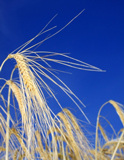
Photographer: Simon Howden
Grain, particularly cooked grain is not a food the dog has evolved to eat in large quantities, and yet that is precisely what the pet food manufacturers add in large quantities to canned and dry pet foods. Therefore, most domestic dogs eat a diet based largely on grain which includes most canned and soft moist foods and practically all dry dog foods. Commercial dog foods are based on grain because it is cheap and available and not because it is the best food to feed dogs.
Also, many health food advocates feed grains to their dogs thinking it is healthy for them. Usually people who follow the "Macrobiotic ideas" or the "Pritikin-type" diets feed their dogs grains. These individuals use rice, usually brown, but sometimes white, as the basis of the diet. This is done very much for economic reasons, and partly because they have faith in such diets.
Unfortunately, grain based diets are implicated in all sorts of allergies, diabetes, digestive system related issues, skin problems, pancreatic problems and other health problems such as inflammatory conditions. One culprit is the protein called gluten found in grain, particularly wheat. That is why so-called health foods often boast being "gluten free". However, grain problems go much deeper than that.
Grain feeding does not usually cause immediate problem. Dogs are scavengers and omnivores which means they can cope with just about any food, cooked or raw without problems, for short periods or in small amounts. It is when a generally unsuitable food, such as grain, is fed as most of the diet for a number of years that problems begin to surface.
Dogs that eat grain as the major part of their diet suffer premature ageing and the early development of degenerative diseases, such as arthritis, cancer, diabetes, and other pancreatic problems. Many skin problems, allergic problems and arthritic problems respond to the withdrawal of grains from a dog's diet.
Also, many health food advocates feed grains to their dogs thinking it is healthy for them. Usually people who follow the "Macrobiotic ideas" or the "Pritikin-type" diets feed their dogs grains. These individuals use rice, usually brown, but sometimes white, as the basis of the diet. This is done very much for economic reasons, and partly because they have faith in such diets.
Unfortunately, grain based diets are implicated in all sorts of allergies, diabetes, digestive system related issues, skin problems, pancreatic problems and other health problems such as inflammatory conditions. One culprit is the protein called gluten found in grain, particularly wheat. That is why so-called health foods often boast being "gluten free". However, grain problems go much deeper than that.
Grain feeding does not usually cause immediate problem. Dogs are scavengers and omnivores which means they can cope with just about any food, cooked or raw without problems, for short periods or in small amounts. It is when a generally unsuitable food, such as grain, is fed as most of the diet for a number of years that problems begin to surface.
Dogs that eat grain as the major part of their diet suffer premature ageing and the early development of degenerative diseases, such as arthritis, cancer, diabetes, and other pancreatic problems. Many skin problems, allergic problems and arthritic problems respond to the withdrawal of grains from a dog's diet.
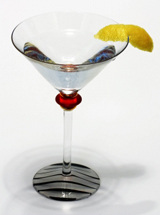
However, the following will explain to you very clearly why cooked grains are a major source of stress to your dogs’ digestive system. Sidney Baker, M.D., in his book, “Detoxification and Healing” explained it well as he said that sugars from processed and cooked grains do not burn clean. They burn incompletely in the body because they are lacking many nutrients such as enzymes and minerals. The sugar molecule from rice or oats for example are not broken down to their most fundamental components but rather into alcohol and lactic acid.
From eating cooked grains, a dog's intestinal tract will make alcohol in the intestines every day. The dog's body must burn the alcohol as it cannot save it as in the case of lactic acid. Alcohol interferes with the primary function of many different enzymes, especially enzymes called cytochrome P450 that are the main workers in the body’s detoxification system in the liver.
So now every time you see grain ingredients in your dog’s canned or dry diet, you know why these dog foods can cause your dog’s liver and digestive system to degenerate and fail.
From eating cooked grains, a dog's intestinal tract will make alcohol in the intestines every day. The dog's body must burn the alcohol as it cannot save it as in the case of lactic acid. Alcohol interferes with the primary function of many different enzymes, especially enzymes called cytochrome P450 that are the main workers in the body’s detoxification system in the liver.
So now every time you see grain ingredients in your dog’s canned or dry diet, you know why these dog foods can cause your dog’s liver and digestive system to degenerate and fail.
Why are Vitamins Added to Canned and Dry Pet Foods Harmful to My Dog's Liver and Kidneys?
Vitamins are intricate, interrelated, integrated, united organic nutritive groups. Nature made them as an indistinguishable part of foods for the benefit of human health. Vitamins are inseparable as working nutrients from trace elements, minerals, proteins, and other elements.
Chemists have attempted to isolate and identify some of the components of these food complexes, labeling the seemingly “active” elements as vitamins or other nutrients. Yet there is no possible way that even the sum of the parts is equal to the whole. It is only the whole food, intact and unaltered, that works as a nutritional source. The isolated parts are not recognized by the body as foods. In large amounts, such isolated chemicals function more like drugs, which stimulate or suppress biochemical functions, not provide vitamins for the cells to carry on their vital activities.
Natural, food-source vitamins are enzymatically alive. Man-made, synthetic vitamins are dead chemicals. Optimum pet health requires “live” biochemicals. It is simply a matter of chemistry versus biochemistry.
Here are some of the well known vitamins added to pet’s canned and dry foods and why they are toxic to the digestive system: Vitamin E, Vitamin B-12 , Vitamin C, Niacin, Riboflavin (Vitamin B-2), Vitamin A, Folic Acid, Pyridoxine Hydrochloride (Vitamin B-6), Thiamin Mononitrate (Vitamin B-1), Vitamin D-2, Biotin and Vitamin K1.
Some Examples Comparing Natural Vitamins as Found in Real Foods vs. Man-Made Isolated Chemical Vitamins:
Synthetic vitamin B1 added to pets’ foods:
Thiamine mononitrate or thiamine hydrochloride. Approximately 95% of the vitamin B complex supplements are produced from petrochemicals or other non-food elements. The synthetic forms of thiamine can be toxic. Toxic symptoms include: Edema (fluid retention, swelling), shaking or tremors, nervousness, disturbances in heart rhythms, severe disturbances in heart and nerve functions, fatty liver and vascular hypotension.
Natural vitamin B1 found in real foods:
The natural, co-enzymatic B1 is Thiamine phyrophosphate. The natural B1 vitamin is the only kind the body can use in any biochemical reactions. Thiamine is required for normal functioning of all body cells, especially nerves. It simply cannot be duplicated in labs and made synthetically.
Synthetic vitamin B6 added to Pets’ foods:
Isolated and synthetic pyridoxine hydrochloride is not the natural bioactive complex vitamin B6. It is, however, the chemical form used in almost all vitamin supplements and what’s added to your dog’s canned or dry foods.
Fractionated, synthetic vitamin B6 can be toxic to the nervous system’s sense of touch and causing central nervous system abnormalities, particularly when taken in large doses. Tingling sensations in the neck and extremities, lack of muscle coordination, a stumbling gait, disturbances and degeneration of nerve tissue can occur.
Vitamin B6 tends to work with vitamin B2, so excess B6 often results in a shortage of B2, causing eye irritation, for example. Other B complex members would also be affected.
Natural vitamin B6 as found in real foods:
The active form of vitamin B6 is pyridoxal phosphate, the predominate form, which also occurs in its amino form, pyridoxamine phosphate. Both of these are in coenzyme forms. Plants contain a “unique form” of vitamin B6 in addition to the pyridoxal phosphate and pyridoxamine phosphate. This natural form is pyridoxine glucoside.
Vitamins are intricate, interrelated, integrated, united organic nutritive groups. Nature made them as an indistinguishable part of foods for the benefit of human health. Vitamins are inseparable as working nutrients from trace elements, minerals, proteins, and other elements.
Chemists have attempted to isolate and identify some of the components of these food complexes, labeling the seemingly “active” elements as vitamins or other nutrients. Yet there is no possible way that even the sum of the parts is equal to the whole. It is only the whole food, intact and unaltered, that works as a nutritional source. The isolated parts are not recognized by the body as foods. In large amounts, such isolated chemicals function more like drugs, which stimulate or suppress biochemical functions, not provide vitamins for the cells to carry on their vital activities.
Natural, food-source vitamins are enzymatically alive. Man-made, synthetic vitamins are dead chemicals. Optimum pet health requires “live” biochemicals. It is simply a matter of chemistry versus biochemistry.
Here are some of the well known vitamins added to pet’s canned and dry foods and why they are toxic to the digestive system: Vitamin E, Vitamin B-12 , Vitamin C, Niacin, Riboflavin (Vitamin B-2), Vitamin A, Folic Acid, Pyridoxine Hydrochloride (Vitamin B-6), Thiamin Mononitrate (Vitamin B-1), Vitamin D-2, Biotin and Vitamin K1.
Some Examples Comparing Natural Vitamins as Found in Real Foods vs. Man-Made Isolated Chemical Vitamins:
Synthetic vitamin B1 added to pets’ foods:
Thiamine mononitrate or thiamine hydrochloride. Approximately 95% of the vitamin B complex supplements are produced from petrochemicals or other non-food elements. The synthetic forms of thiamine can be toxic. Toxic symptoms include: Edema (fluid retention, swelling), shaking or tremors, nervousness, disturbances in heart rhythms, severe disturbances in heart and nerve functions, fatty liver and vascular hypotension.
Natural vitamin B1 found in real foods:
The natural, co-enzymatic B1 is Thiamine phyrophosphate. The natural B1 vitamin is the only kind the body can use in any biochemical reactions. Thiamine is required for normal functioning of all body cells, especially nerves. It simply cannot be duplicated in labs and made synthetically.
Synthetic vitamin B6 added to Pets’ foods:
Isolated and synthetic pyridoxine hydrochloride is not the natural bioactive complex vitamin B6. It is, however, the chemical form used in almost all vitamin supplements and what’s added to your dog’s canned or dry foods.
Fractionated, synthetic vitamin B6 can be toxic to the nervous system’s sense of touch and causing central nervous system abnormalities, particularly when taken in large doses. Tingling sensations in the neck and extremities, lack of muscle coordination, a stumbling gait, disturbances and degeneration of nerve tissue can occur.
Vitamin B6 tends to work with vitamin B2, so excess B6 often results in a shortage of B2, causing eye irritation, for example. Other B complex members would also be affected.
Natural vitamin B6 as found in real foods:
The active form of vitamin B6 is pyridoxal phosphate, the predominate form, which also occurs in its amino form, pyridoxamine phosphate. Both of these are in coenzyme forms. Plants contain a “unique form” of vitamin B6 in addition to the pyridoxal phosphate and pyridoxamine phosphate. This natural form is pyridoxine glucoside.
Why Are Minerals added to Canned and Dry Pet Foods Harmful to My Dog's Liver and Kidneys?
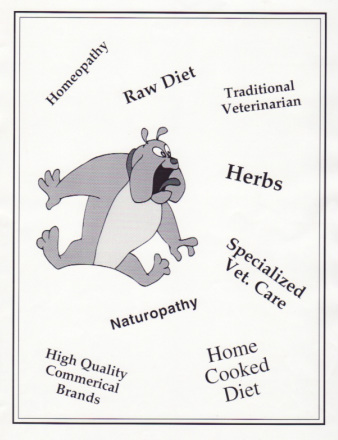
We are often asked this question: “Do the canned or dry foods I’m feeding my dog have enough minerals to keep my dog’s bones and teeth healthy?”
Our answer to the question is NO. If your dog is living on dry or canned commercial foods, and you see the impressive mineral list on the label such as calcium, zinc, magnesium, iodine...etc., you would think your dog is getting their daily essential minerals requirements. But the minerals your dog is getting from these commercial foods are actually leading to mineral imbalances and causing problems to their liver and kidneys. The body has been designed to use natural forms of these nutrients with all the available co-factors and often does not recognize the isolated synthetic forms and does not know what to do with them.
Our answer to the question is NO. If your dog is living on dry or canned commercial foods, and you see the impressive mineral list on the label such as calcium, zinc, magnesium, iodine...etc., you would think your dog is getting their daily essential minerals requirements. But the minerals your dog is getting from these commercial foods are actually leading to mineral imbalances and causing problems to their liver and kidneys. The body has been designed to use natural forms of these nutrients with all the available co-factors and often does not recognize the isolated synthetic forms and does not know what to do with them.
Why is it That Your Dog’s Body Cannot Utilize the Impressive List of Minerals Found in Canned or Dry Dog Foods?
The answer is because these minerals are inorganic minerals. Inorganic minerals are not the same as organic minerals found in natural foods like fruits, vegetables and sea vegetables. The way elements of a compound are connected determines whether it is organic or inorganic. The elements of organic minerals as found in fruits and vegetables are loosely held together. The constituent parts of inorganic minerals are held together tightly; they have strong bonds that the body cannot break easily. This means that such minerals do not have the nitrogen bond attached to them in order to break them down easily and make them accessible to the body's cells.
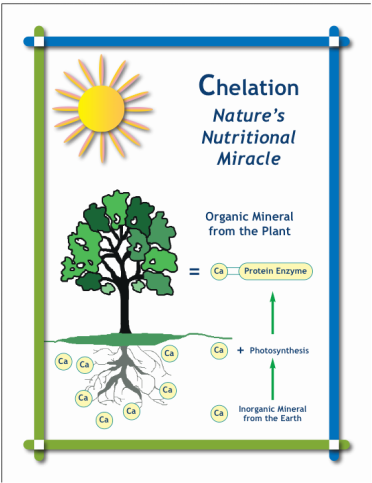
Minerals are found in nature in the soil or in sea water. These minerals are hard minerals such as in rocks or sand. Objects in the mineral kingdom are made up of substances like carbon, hydrogen, oxygen, silicon, manganese, and a vast assortment of other elements. Elements in this kingdom are held together by very strong bonds. The scientific terms for the strong, inorganic, mineral kingdom bonds are “electrovalent” or “ionic”.
Your dog can consume inorganic minerals, but his/her body will either store them as toxins or eliminate them. A dog’s body does not have the physiological capabilities of easily converting inorganic minerals into usable organic materials, but plants do. That’s the beauty of plants as food. A plant will process these hard minerals through the photosynthesis process in order to turn them into organic minerals (soft minerals). Plants can take minerals from the soil, break the strong bonds, and incorporate the minerals into their physical structure. When we feed our dogs the plants (fruits and vegetables), their bodies can utilize these soft essential minerals. The plants make the minerals soft or accessible to the body' cells. Plants “eat” the mineral kingdom; dogs eat the plants.
In addition, the relationships of minerals to each other are very precisely calibrated when they are in foods. So, if they are offered to the body as a single mineral or isolated inorganic minerals as found in dogs commercial foods, it is easy to throw the complex system of minerals out of balance in the body.
Even though the following information is for humans, it is very much applicable to dogs’ nutrition. Quoting from the book, “Natural Healing with Foods” by Nancy Appleton, pgs. 11-14:
Let's look at two important minerals that work in direct relationship to one another: calcium and phosphorus. These minerals work best in the bloodstream in a relationship of 2.5 parts calcium to 1 part phosphorus. Normally, the calcium level in the bloodstream is about 10 milligrams per deciliter, and the phosphorus level is 4 milligrams. This means that your ability to use the calcium in your system is phosphorus dependent: no matter how much calcium you have, you can only use it if there is enough phosphorus present to go with it.
For example, if you upset your body’s chemistry and your phosphorus level drops to 2 mg per deciliter, rather than the normal 4, only 5 mg of calcium can be used by your body - the ratio must be 2.5 times as much calcium as phosphorus for the minerals to function optimally.
Any additional calcium you may have will either be excreted in the urine or it may stay in the body and become what I call "toxic" excess and nonfunctioning calcium that can cause a number of problems. For instance, the excess calcium may form hard deposits that irritate soft tissue. The plaque on your teeth that irritates your gums is an example of this. Or the toxic calcium can go to your joints and be a part of the arthritis process. In the arteries, toxic calcium can be a factor in arteriosclerosis. It can also contribute to kidney stones, bone spurs, gallstones, and cataracts.
But what if you have less calcium than you need? For example, if your calcium levels drop to 5 mg, then only 2 mg of phosphorus will be used. This could leave an excess of phosphorus, which also is either secreted or retained. If too much is retained, it, too, can become toxic. And that's not all! When there is an excess of phosphorus-to-calcium in your bloodstream, a message is sent to your body that calcium is needed - and your body will pull that calcium right out of your bones - causing osteoporosis, among other things.
Your dog can consume inorganic minerals, but his/her body will either store them as toxins or eliminate them. A dog’s body does not have the physiological capabilities of easily converting inorganic minerals into usable organic materials, but plants do. That’s the beauty of plants as food. A plant will process these hard minerals through the photosynthesis process in order to turn them into organic minerals (soft minerals). Plants can take minerals from the soil, break the strong bonds, and incorporate the minerals into their physical structure. When we feed our dogs the plants (fruits and vegetables), their bodies can utilize these soft essential minerals. The plants make the minerals soft or accessible to the body' cells. Plants “eat” the mineral kingdom; dogs eat the plants.
In addition, the relationships of minerals to each other are very precisely calibrated when they are in foods. So, if they are offered to the body as a single mineral or isolated inorganic minerals as found in dogs commercial foods, it is easy to throw the complex system of minerals out of balance in the body.
Even though the following information is for humans, it is very much applicable to dogs’ nutrition. Quoting from the book, “Natural Healing with Foods” by Nancy Appleton, pgs. 11-14:
Let's look at two important minerals that work in direct relationship to one another: calcium and phosphorus. These minerals work best in the bloodstream in a relationship of 2.5 parts calcium to 1 part phosphorus. Normally, the calcium level in the bloodstream is about 10 milligrams per deciliter, and the phosphorus level is 4 milligrams. This means that your ability to use the calcium in your system is phosphorus dependent: no matter how much calcium you have, you can only use it if there is enough phosphorus present to go with it.
For example, if you upset your body’s chemistry and your phosphorus level drops to 2 mg per deciliter, rather than the normal 4, only 5 mg of calcium can be used by your body - the ratio must be 2.5 times as much calcium as phosphorus for the minerals to function optimally.
Any additional calcium you may have will either be excreted in the urine or it may stay in the body and become what I call "toxic" excess and nonfunctioning calcium that can cause a number of problems. For instance, the excess calcium may form hard deposits that irritate soft tissue. The plaque on your teeth that irritates your gums is an example of this. Or the toxic calcium can go to your joints and be a part of the arthritis process. In the arteries, toxic calcium can be a factor in arteriosclerosis. It can also contribute to kidney stones, bone spurs, gallstones, and cataracts.
But what if you have less calcium than you need? For example, if your calcium levels drop to 5 mg, then only 2 mg of phosphorus will be used. This could leave an excess of phosphorus, which also is either secreted or retained. If too much is retained, it, too, can become toxic. And that's not all! When there is an excess of phosphorus-to-calcium in your bloodstream, a message is sent to your body that calcium is needed - and your body will pull that calcium right out of your bones - causing osteoporosis, among other things.
It's a complex balancing act
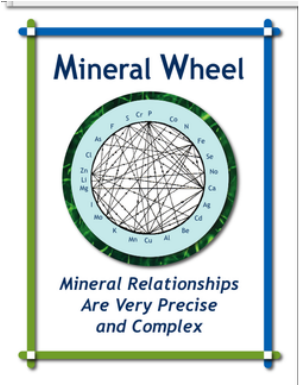
These minerals do not work by themselves but work only in relation to each other. This means that the whole system can be immobilized if one of the minerals becomes deficient, even if the other minerals are present in the bloodstream. For instance, no matter how many units of calcium you have in the bloodstream, if you don't have enough phosphorus to make that 2.5:1 mixture, the calcium is not usable. So you can actually have an excess of calcium in your bloodstream and still be effectively deficient in usable calcium......
Copper and zinc are two other minerals that work in direct relation to each other. If the zinc becomes deficient, the copper can become toxic and vice versa. This is true of all the different minerals in the body; they all work in relation to one another. Therefore, directly or indirectly, all of the minerals can be affected if one of them becomes deficient or excessive”.
Diet Solution:
Copper and zinc are two other minerals that work in direct relation to each other. If the zinc becomes deficient, the copper can become toxic and vice versa. This is true of all the different minerals in the body; they all work in relation to one another. Therefore, directly or indirectly, all of the minerals can be affected if one of them becomes deficient or excessive”.
Diet Solution:
The only way you can guarantee that you are creating a state of homeostasis in your dog’s body at all times is for the nutrients, especially minerals, to come from a REAL FOOD source, not the man made inorganic minerals offered to them through commercial pet foods or isolated ingredients in multi-vitamin/mineral supplements.
Mineral rich foods are: raw bones, wild-crafted organic microalgae, all types of sea veggies like wakame, arame or kelp, green vegetables freshly juiced or put through the food processor, and fruits. Through these foods, your dog will get their organic minerals the way mother- nature prepared and intended them to have them.
We could go on explaining the difference between organic and inorganic list of many of these vitamins and minerals, but we believe that you get the picture by now why the synthetic and man-made vitamins and minerals added to pet’s commercially prepared foods are harmful to their digestive system.
"After reading your material, I am feeling like the most horrible pet parent imaginable right now. I thought that I'd chosen a good dog food - clearly I'm a dog food Marketing Department's dream consumer. Grain free! Healthy! Look at the pictures of fruits and vegetables on the bag! Wow, have I ever been duped!"
Mineral rich foods are: raw bones, wild-crafted organic microalgae, all types of sea veggies like wakame, arame or kelp, green vegetables freshly juiced or put through the food processor, and fruits. Through these foods, your dog will get their organic minerals the way mother- nature prepared and intended them to have them.
We could go on explaining the difference between organic and inorganic list of many of these vitamins and minerals, but we believe that you get the picture by now why the synthetic and man-made vitamins and minerals added to pet’s commercially prepared foods are harmful to their digestive system.
"After reading your material, I am feeling like the most horrible pet parent imaginable right now. I thought that I'd chosen a good dog food - clearly I'm a dog food Marketing Department's dream consumer. Grain free! Healthy! Look at the pictures of fruits and vegetables on the bag! Wow, have I ever been duped!"
So, What Do I Feed My Dog?
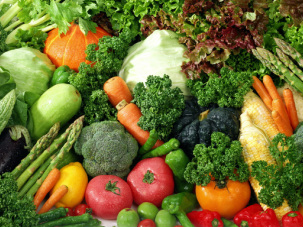
So if I am recommending that you don’t feed your dog agribusiness or organic commercially prepared canned or dry foods, what is the ideal diet that will keep your dog’s liver and kidneys healthy for life?
Click here to learn about a list of diet principles that if applied to your dog’s meals can create a healthy and nutritious diet that may take your dog from a degenerative condition to a regenerative state of health and a lifetime free of health problems.
Let me help you with what foods to feed your dog.
Click here to learn about a list of diet principles that if applied to your dog’s meals can create a healthy and nutritious diet that may take your dog from a degenerative condition to a regenerative state of health and a lifetime free of health problems.
Let me help you with what foods to feed your dog.
|
Free "Canine Health, Naturally" Email Series
Discover what you need to know to reverse your dog's degenerative disease, naturally! Give your pet extraordinary health that lasts a lifetime. |
NOTE: Your email address will never be rented, traded, or sold. Privacy Policy.
|